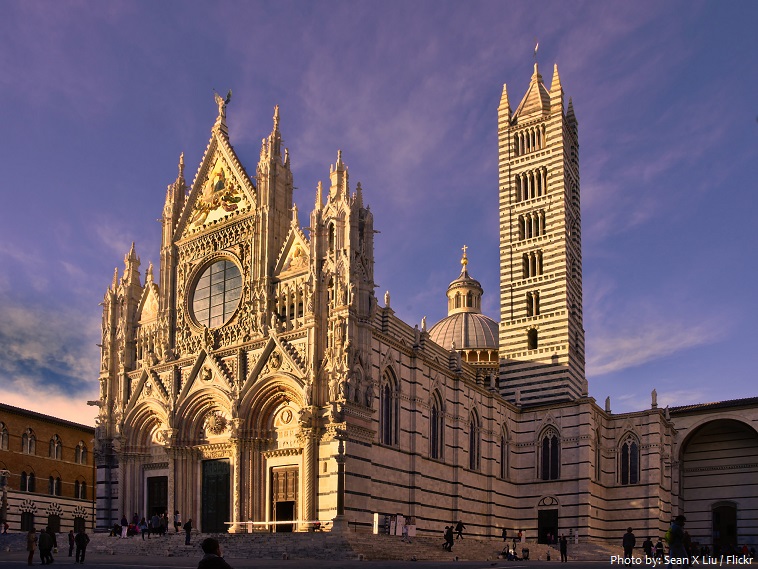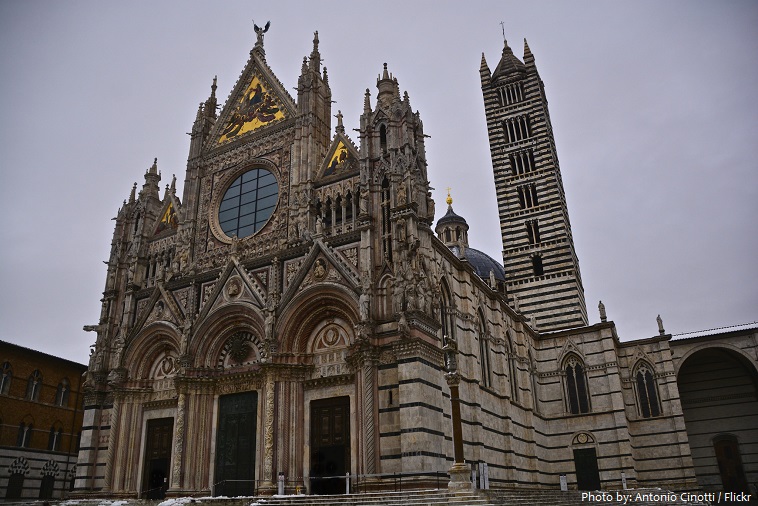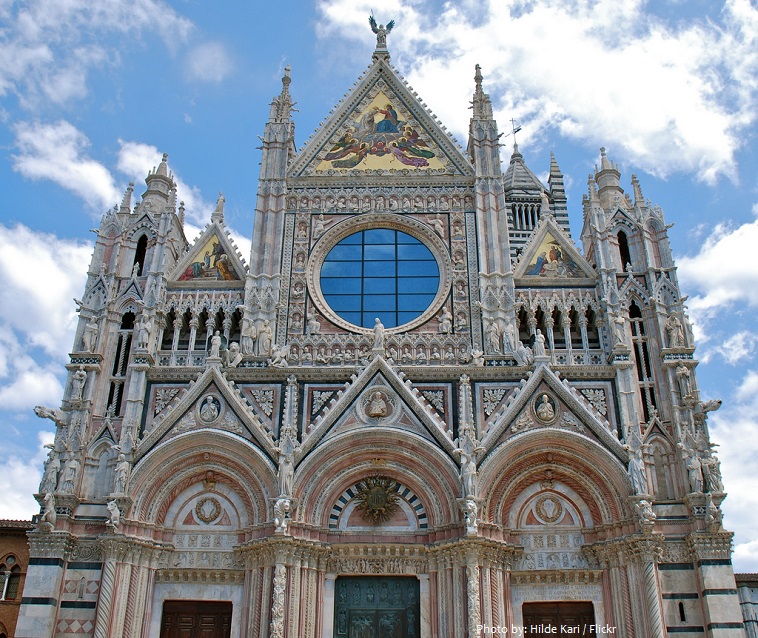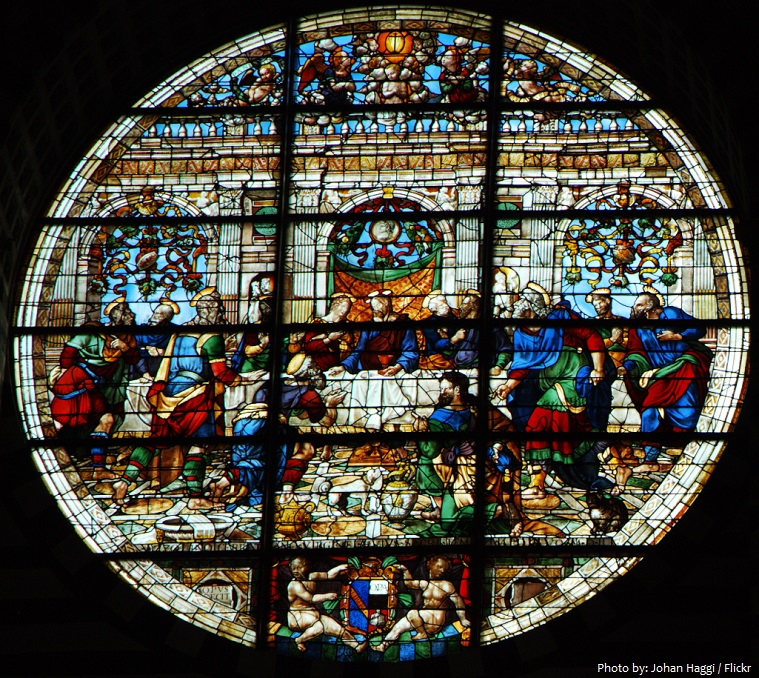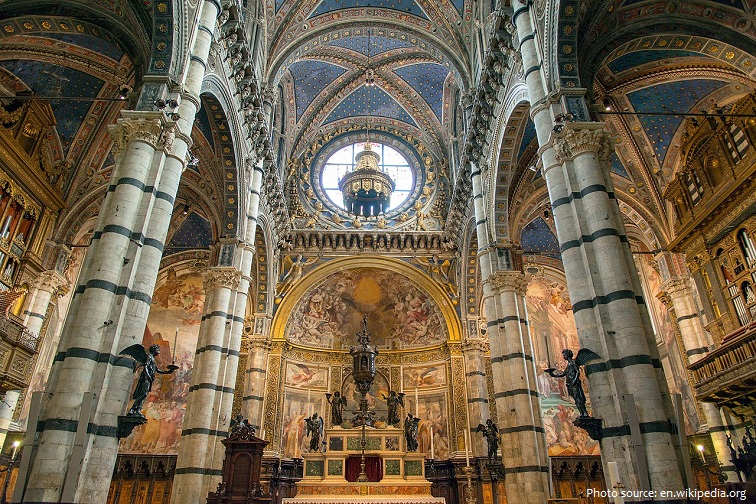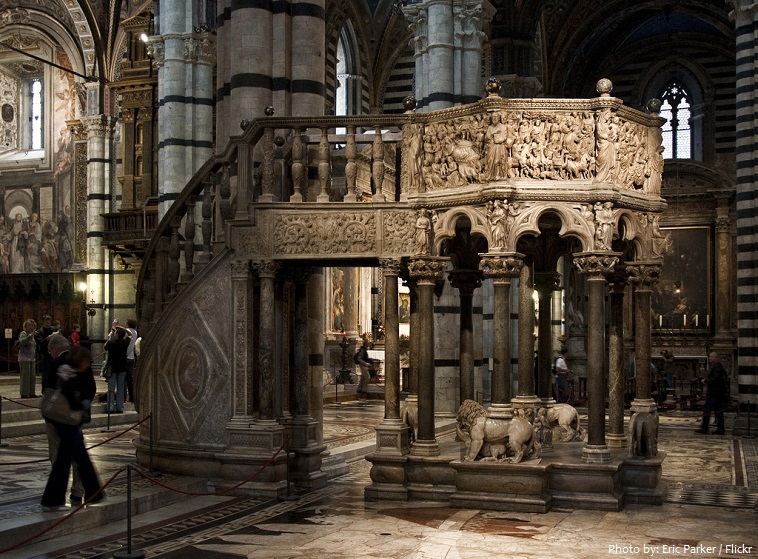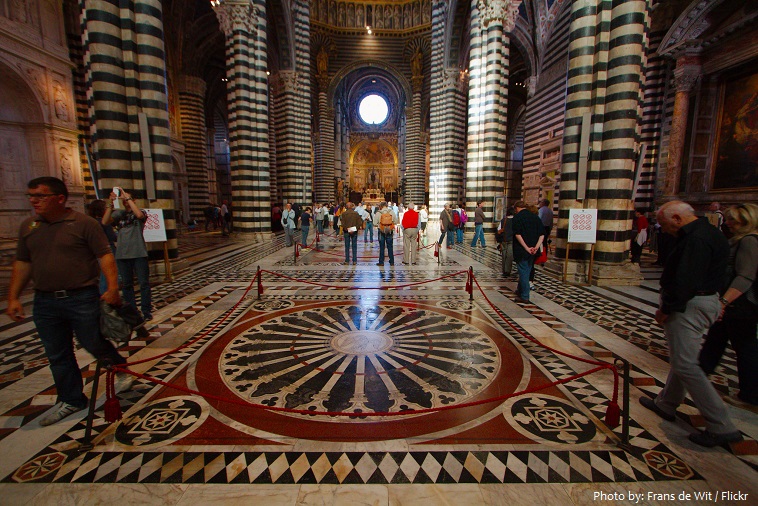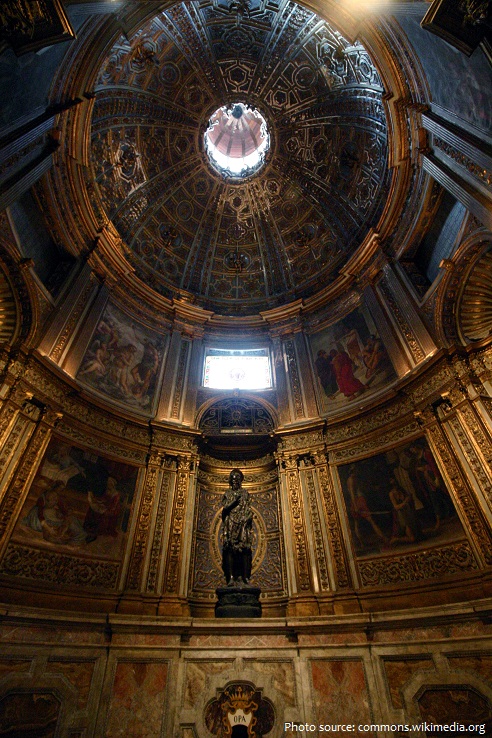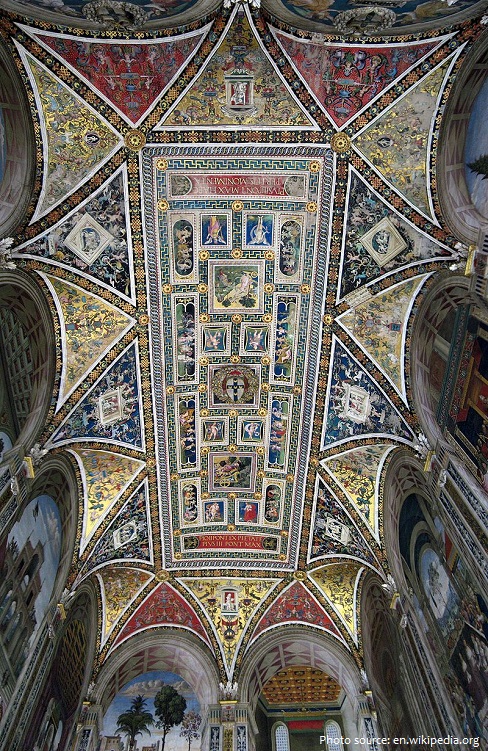Siena Cathedral is a medieval church in Siena, Italy, dedicated to the Assumption of Mary.
It is one of Italy’s top Gothic cathedrals.
Siena’s cathedral is equally stunning inside and out, featuring the work of Italy’s finest artists of the day: Nicola and Giovanni Pisano, Donatello, Pinturicchio, Lorenzo Ghiberti, and Bernini.
The cathedral in its present form was begun in 1229, and the dome was completed in 1264.
Siena’s Duomo was built by Gothic master Nicola Pisano. His son, Giovanni, drew up the plans for the lower half of the facade, begun in 1285. The facade’s upper half was added in the 14th century.
Expansion got underway in 1339 with construction on a new nave off the Duomo’s right transept. But in 1348, the Black Death swept through the city and killed 4/5 of Siena’s population.
The giant cathedral was never completed, and the half-finished walls of the Duomo Nuovo (New Cathedral) survive as a monument to Siena’s ambition and one-time wealth.
Siena Cathedral has the form of a Latin cross with a slightly projecting transept, a dome and a bell tower.
The belltower has six bells, the oldest one was cast in 1149.
The exterior and interior are constructed of white and greenish-black marble in alternating stripes, with addition of red marble on the façade.
The façade of Siena Cathedral is one of the most fascinating in all of Italy and certainly one of the most impressive features in Siena. On the facade there are 35 statues of prophets and patriarchs grouped around the Virgin.
Three large mosaics on the gables of the façade were made in Venice in 1878. The large central mosaic, the Coronation of the Virgin, is the work of Luigi Mussini. The smaller mosaics on each side, Nativity of Jesus and Presentation of Mary in the Temple, were made by Alessandro Franchi.
Above the central doorway is a rose window made in 1288 to the designs of Duccio. It is one of the earliest remaining examples of Italian stained glass. The round stained-glass window in the façade dates from 1549 and represents the Last Supper. It is the work of Pastorino de’ Pastorini.
In the interior the pictorial effect of the black and white marble stripes on the walls and columns strikes the eye. Black and white are the colors of the civic coat of arms of Siena.
The nave is separated from the two aisles by semicircular arches. The capitals of the columns in the west bays of the nave are sculpted with allegorical busts and animals. The dome rises from a hexagonal base with supporting columns. The lantern atop the dome was added by Gian Lorenzo Bernini.
The marble high altar of the presbytery was built in 1532 by Baldassarre Peruzzi. The enormous bronze ciborium is the work of Vecchietta. At the sides of the high altar the uppermost angels are masterpieces by Francesco di Giorgio Martini.
The Siena Cathedral Pulpit is an octagonal structure in Siena Cathedral sculpted by Nicola Pisano and his assistants Arnolfo di Cambio, Lapo di Ricevuto, and Nicolas’ son Giovanni Pisano between the fall of 1265 and the fall of 1268. The whole message of the pulpit is concerned with the doctrine of Salvation and the Last Judgment. In the top level seven scenes narrate the Life of Christ.
The inlaid marble mosaic floor is one of the most ornate of its kind in Italy, covering the whole floor of the cathedral. This undertaking went on from the 14th to the 16th centuries, and about forty artists made their contribution. The floor consists of 56 panels in different sizes. Most have a rectangular shape, but the later ones in the transept are hexagons or rhombuses. They represent the sibyls, scenes from the Old Testament, allegories and virtues.
The Chapel of Saint John the Baptist is situated in the left transept. At the back of this chapel, amidst the rich renaissance decorations, is the bronze statue of St. John the Baptist by Donatello.
Adjoining the cathedral is the Piccolomini Library, housing precious illuminated choir books and frescoes painted by the Umbrian Bernardino di Betto, called Pinturicchio, probably based on designs by Raphael.
The cathedral’s valuable pieces of art including The Feast of Herod by Donatello, and works by Bernini and the young Michelangelo make it an extraordinary museum of Italian sculpture.
In the 19th century, the cathedral was extensively restored, including the addition of golden mosaics on the façade.
Previously the episcopal seat of the Diocese of Siena, from the 15th century the Archdiocese of Siena, it is now that of the Archdiocese of Siena-Colle di Val d’Elsa-Montalcino.
